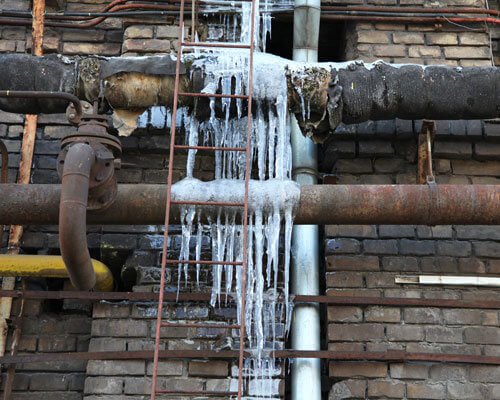Shielding Your Pipes from Freezing Issues: Key Approaches
Shielding Your Pipes from Freezing Issues: Key Approaches
Blog Article
They are making a number of great points relating to Winter Plumbing Precautions: Preventing Frozen Pipes overall in this post below.

Cold weather can damage your plumbing, especially by freezing pipes. Here's exactly how to avoid it from occurring and what to do if it does.
Introduction
As temperature levels decline, the threat of icy pipelines increases, potentially bring about expensive fixings and water damages. Understanding just how to prevent icy pipes is important for property owners in cold environments.
Avoidance Tips
Shielding prone pipes
Cover pipelines in insulation sleeves or use warmth tape to safeguard them from freezing temperatures. Focus on pipelines in unheated or exterior locations of the home.
Home heating methods
Maintain indoor rooms properly heated up, specifically areas with pipes. Open up cupboard doors to enable warm air to circulate around pipes under sinks.
Just how to identify icy pipelines
Search for decreased water flow from taps, unusual smells or sounds from pipes, and noticeable frost on subjected pipes.
Long-Term Solutions
Structural changes
Think about rerouting pipelines far from exterior walls or unheated locations. Include added insulation to attics, cellars, and crawl spaces.
Upgrading insulation
Invest in premium insulation for pipes, attic rooms, and walls. Appropriate insulation helps keep constant temperatures and minimizes the risk of icy pipes.
Shielding Outdoor Pipes
Garden hose pipes and exterior faucets
Detach and drain pipes garden pipes prior to winter months. Set up frost-proof faucets or cover exterior faucets with protected caps.
Recognizing Frozen Pipes
What triggers pipes to freeze?
Pipelines freeze when revealed to temperatures listed below 32 ° F (0 ° C) for expanded periods. As water inside the pipelines ices up, it expands, putting pressure on the pipe walls and potentially creating them to break.
Threats and damages
Frozen pipelines can bring about water system disruptions, residential property damages, and pricey repair services. Ruptured pipelines can flood homes and cause substantial architectural damages.
Indications of Frozen Pipeline
Recognizing icy pipes early can prevent them from breaking.
What to Do If Your Pipes Freeze
Immediate actions to take
If you believe frozen pipelines, keep faucets available to relieve pressure as the ice melts. Use a hairdryer or towels soaked in hot water to thaw pipes gradually.
Verdict
Protecting against frozen pipes requires proactive actions and quick feedbacks. By understanding the reasons, indications, and preventive measures, property owners can safeguard their pipes throughout cold weather.
5 Ways to Prevent Frozen Pipes
Drain Outdoor Faucets and Disconnect Hoses
First, close the shut-off valve that controls the flow of water in the pipe to your outdoor faucet. Then, head outside to disconnect and drain your hose and open the outdoor faucet to allow the water to completely drain out of the line. Turn off the faucet when done. Finally, head back to the shut-off valve and drain the remaining water inside the pipe into a bucket or container. Additionally, if you have a home irrigation system, you should consider hiring an expert to clear the system of water each year.
Insulate Pipes
One of the best and most cost-effective methods for preventing frozen water pipes is to wrap your pipes with insulation. This is especially important for areas in your home that aren’t exposed to heat, such as an attic. We suggest using foam sleeves, which can typically be found at your local hardware store.
Keep Heat Running at 65
Your pipes are located inside your walls, and the temperature there is much colder than the rest of the house. To prevent your pipes from freezing, The Insurance Information Institute suggests that you keep your home heated to at least 65 degrees, even when traveling. You may want to invest in smart devices that can keep an eye on the temperature in your home while you’re away.
Leave Water Dripping
Moving water — even a small trickle — can prevent ice from forming inside your pipes. When freezing temps are imminent, start a drip of water from all faucets that serve exposed pipes. Leaving a few faucets running will also help relieve pressure inside the pipes and help prevent a rupture if the water inside freezes.
Open Cupboard Doors
Warm your kitchen and bathroom pipes by opening cupboards and vanities. You should also leave your interior doors ajar to help warm air circulate evenly throughout your home.

I found that blog posting on How to Prevent Your Pipes From Freezing when doing a lookup on the search engines. Feel free to pause to promote this entry if you enjoyed reading it. We take joy in reading our article about 6 Ways to Prevent Frozen Pipes.
Get Offer Report this page